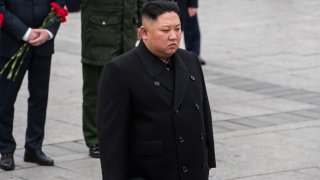The Revival of the Moscow-Pyongyang Axis
The occurrence of two Putin-Kim summits in less than a year serves as a wake-up call to the United States and its allies.
Pyongyang relished Moscow’s revival of the alliance-like relationship that it had severed decades earlier. Still, many international observers were shocked when Vladimir Putin signed a Strategic Partnership Pact in June 2024. They concluded that this seemingly spontaneous response to the Russo-Ukraine war and the severe sanctions imposed on Russia, including by South Korea, would be short-sighted.
Of course, North Korea’s enormous armory of shells and missiles has a special allure for an army immersed in a classic war of attrition. Yet, dwelling on this fact would miss a more sustained motivation, namely that the “Turn to North Korea” was a natural outgrowth of Putin’s “Turn to the East.” Launched in 2012, Putin’s signature policy for “leaving the West” and forging “Eurasianism” had reinforced its fourth stage.
Informed by the Soviet mindset, the Russian political elite spent two decades regretting Mikhail Gorbachev’s focus on joining a common European home. As an alternative, they desperately sought a place in Asia, grasping onto the Asia Pacific Economic Cooperation (APEC) summit in Vladivostok in 2012 as their opening salvo.
In stage one of his “Turn to the East,” Putin held wide-ranging but contradictory goals: massive investment in the Russian Far East, multipolarity inclusive of U.S. allies, closer ties to China, and finding the missing “Eurasian identity.” His seizure of Crimea and triggering of the Donbas War spelled the end of this strategy since China’s new leader, Xi Jinping, beckoned more tantalizingly.
In the second stage, from 2014 to 2017, North Korea became a priority, seizing on Kim Jong-un’s isolation, including its troubled relationship with China. Putin focused on both “docking” economically with China and autonomously pursuing North Korea, as Xi’s Belt and Road Initiative marginalized Russia. Yet, Kim Jong-un saw meager returns from Putin’s overtures, while Xi left Putin unable to resist Sino-U.S. cooperation on tough United Nations (UN) sanctions.
In the third stage, 2018 to 2021, two realities left Putin’s newly declared “Greater Eurasian Partnership” in limbo: Xi’s disregard for Putin’s interests in an increasingly asymmetrical relationship, despite the impending Sino-U.S. “New Cold War” and Kim’s autarchy in the pandemic, Russian hopes were raised by the Hanoi Summit failure with the United States. No follow-up to an upbeat 2019 Putin-Kim summit proved possible, but Russians were eager.
The Ukraine war showcased a fourth stage in the “Turn to the East,” boosting dependence on China but leaving Russia uneasy as an equal relationship from a quick victory failed to materialize. Xi Jinping was emboldened at Putin’s expense, such as in Central Asia.
Finally, a full-fledged North Korean gambit made sense. Russian foreign policy gained a distinct vector besides China, delivered a blow toward the United States, and unmistakably reasserted Russia’s power in the East. The United States has awakened to this other Axis of Resistance, driven by Russia, embraced by North Korea, and loosely supported by China. The Sino-Russian bond is too strong, despite Beijing’s dissatisfaction over the lack of deference to China’s strategy in the Korean Peninsula.
The occurrence of two Putin-Kim summits in less than a year serves as a wake-up call to the United States and its allies. Yet, many in the Global South, including states that joined the October 2022 (and will join the 2024 BRICS+ summit in Kazan, Russia), do not see this entanglement or aggression in Ukraine as disqualifying.
The next U.S. president must take advantage of Japan’s overlapping outlook on Indo-Pacific security, now driven by Prime Minister Ishiba Shigeru’s tough posture on defense, while building on President Yoon Suk-yeol’s courageous shift on South Korea’s Indo-Pacific role, being sensitive to resistance in South Korea.
The domestic U.S. consensus on China holds promise but could be fragile should bipartisanship on this issue soon be lost. Putin’s North Korea gambit reinforces the oft-noted fear in Tokyo that “Ukraine today is Asia tomorrow.” It adds more evidence to the case that 2022 is also the kickoff of a new danger in Asia.
About the Author:
Gilbert Rozman is editor-in-chief of The Asan Forum and Emeritus Musgrave Professor of Sociology at Princeton University.
Image: Goga Shutter / Shutterstock.

